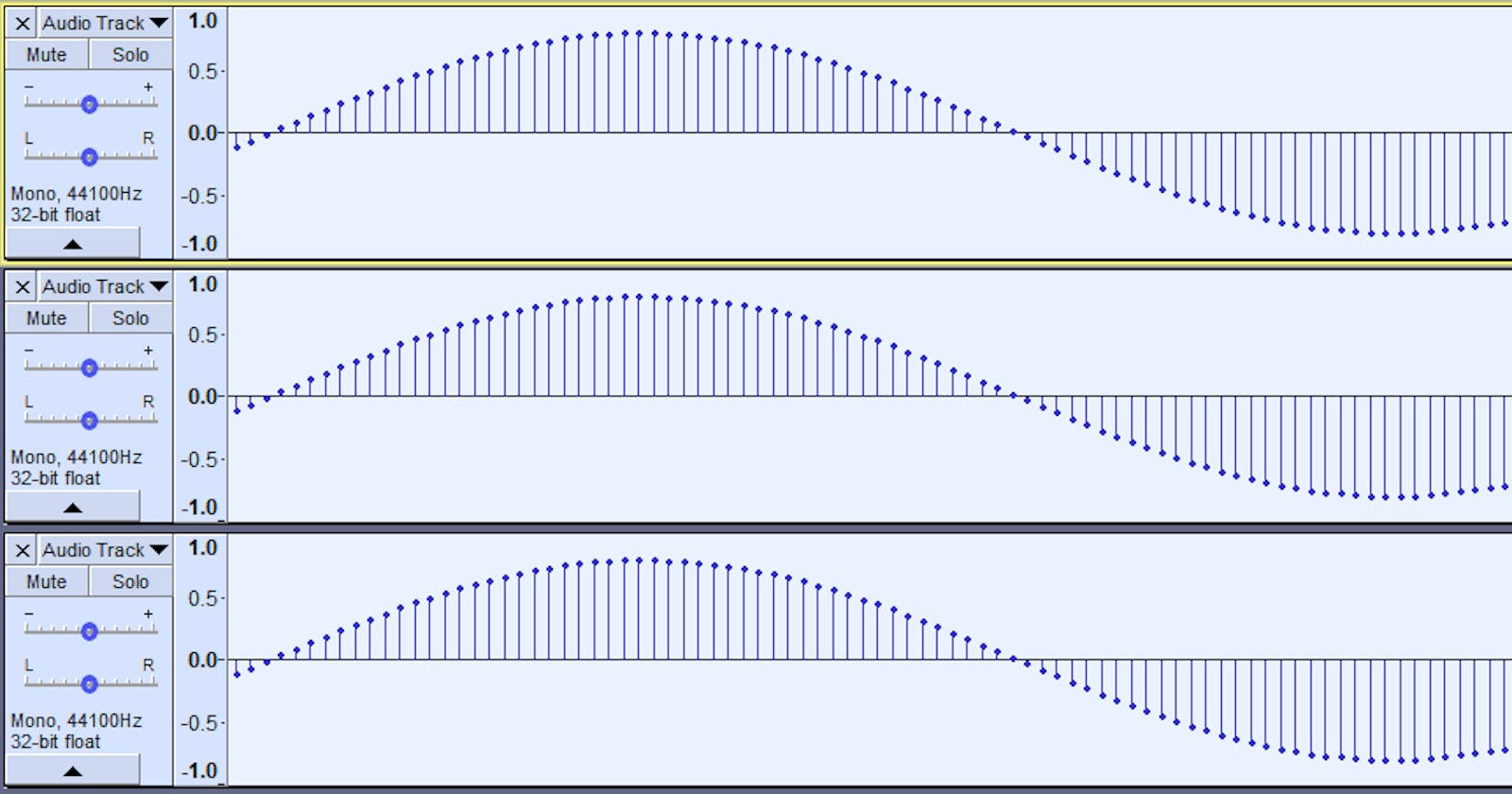100 Days Of ML Code — Day 088
Recap From Day 087
Day 087, we looked at analog versus digital sound.
You can catch up using the link below. 100 Days Of ML Code — Day 087 Recap From Day 086medium.com
Today we will continue from where we left off in day 087
Analog Versus Digital Sound Continued
The key difference between analog and digital, is continuous versus discret e. And just to kind of drive that point home I want to go Audacity and below is a sine wave. All I’ve done below is I’ve zoomed in basically as far as Audacity will go.

That’s maybe a little bit too far there but you can see those individual dots on it. Each of those represents an individual amplitude value that we’ve stored digitally and so we’re down to the lowest level of the digital representation as we zoom in further and further and further.

We can see those individual samples that were captured and of course, Reverb has done a nice job of kind of connecting the dots between them where we don’t really know what’s happening. We can just interpolate them. So that’s the key difference here is this continuous versus discrete.
In the digital domain if we’re thinking about what is actually stored at each of those dots, there’s a few different considerations that we need to think about and these we’ll be exploring in much more detail in the coming days.
The first one is sampling rate which is how many of those dots are we recording every second? and how, this has to do with the the horizontal the time resolution that we’re capturing. How many amplitude values are we recording every second? How fast those dots come one after another?
The second one is bit width. This has to do with resolution in the amplitude dimension. How many bits of digital data are we reserving to store every single one of our individual amplitude values. So again, bit width has to do with what is our resolution on the y axis of a wave form. Sampling rate has to do with what is our resolution on the x axis.
The third thing is how many amplitude samples are we recording for each of the values in the image below? because right now we just see a single dot for each of those single amplitude value in our waveform view but might we need to record two channels or three channels or ten channels in order to represent the locations of sound in space.

We may need to capture multiple amplitude values at each moment. It’s like stereo sound would have two channels, for instance.
So those are the fundamental things we’ll be exploring over the coming days. But before we do that I said I wanted to take a quick digression. It’s not really a digression because it’s really elemental to the differences between analog and digital media and it has to do with how we copy these media.
That’s all for day 088. I hope you found this informative. Thank you for taking time out of your schedule and allowing me to be your guide on this journey. And until next time, be legendary.

